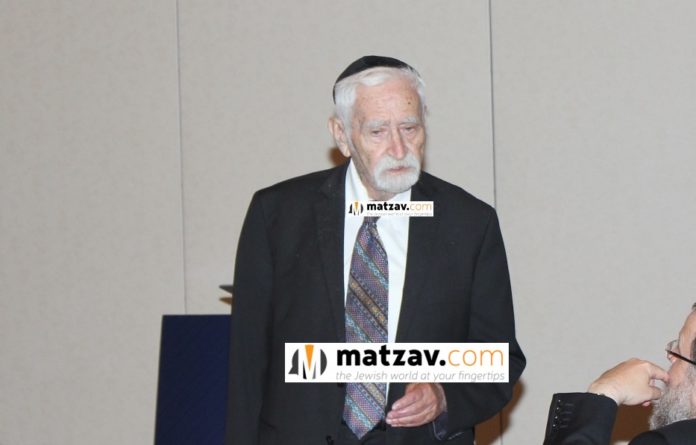
It is with great sadness that Matzav.com reports the petirah of Rav Nota Greenblatt zt”l, av bais din of Memphis, TN and noted rov and posek. He was 96 years old.
Rav Greenblatt was born in 1925 in Washington, DC. In 1928, his parents moved to Ellenville, NY, where his father, Rav Yitzchok, a native of Brisk, became the rov of the shul. Rav Yitzchok then became a shul rov in Newark, which had a large Jewish community. Rav Yitzchok was not only a talmid chochom who wrote seforim, but was also a maggid, traveling around and speaking. In 1943, Rav Yitzchok started the first day school in Newark, which was the second religious day school to open in New Jersey.
Rav Nota Greenblatt was born in Washington, but spent the years age 8 to age 12 in Israel. He returned to the US by himself at the age of 12 in 1937 to study under Rav Dovid Leibowitz at Yeshiva Chofetz Chaim on South 9th Street in Williamsburg. The mashgiach of the yeshiva was Rav Chaim Pinchos Scheinberg. Rav Greenblatt learned with bochurim who were much older than him and was able to hold his own due to his in-depth, Yerushalmi chinuch. He spoke a fluent Yiddish, which helped him become close to Rav Dovid. Rav Dovid told him, “If you’re sincere and you know where you want to go in life and have a plan, you’ll never fail. You will always succeed.”
Rav Dovid passed away in 1941 and Rav Greenblatt decided to join a private kibbutz organized by Rav Yoshe Ber Soloveitchik and his cousin, Rav Michel Feinstein, in Boston. Rav Greenblatt was the youngest in the kibbutz, only 16 years old.
After a year, the kibbutz broke up. Rav Michel Feinstein went back to New York and became a rosh yeshiva at his uncle Rav Moshe Feinstein’s yeshiva. In 1942-3, Rav Greenblatt joined Rav Moshe Feinstein’s yeshiva, Mesivta Tiferes Yerushalayim, and became one of a small group of his prized talmidim. Rav Greenblatt was close throughout his life with Rav Michel and Rav Moshe.
In those years, when a phone call came for Rav Moshe, a yeshiva bochur would answer it. If the question was simple, the bochur would answer it, and if it was difficult, he would pass the phone to Rav Moshe. Rav Greenblatt fielded the phone for the three years he was there.
In 1946, Rav Greenblatt took the first boat allowed by the US government to travel to Palestine after the war. It was packed with hundreds of meshulachim who had been stranded in the US during the war. The boat stopped at the Azor islands, 1,500 miles west of Portugal. Rav Greenblatt got off and decided to take a look around and see if there were any Jews there. He asked around and a priest took him to a forest, where he saw a store with a sign “Goldberg’s Jewelry.” He went in, met a native girl, and asked her where Goldberg is. She pointed to the back. Rav Greenblatt went to the back, opened the door, and saw a Yid with a black Litvishe-style yarmulka sitting and learning Mishnayos while his wife stood nearby. Rav Greenblatt told him, “Shalom aleichem!”
Goldberg became excited. “You speak Yiddish?”
“Yes.”
Goldberg hugged and kissed Rav Greenblatt. He was the first Yid he had seen in 5-6 years. Goldberg had come from Kovno on one of the last boats to Palestine. When the war broke out and it was too dangerous to continue traveling, the Azor islands took in the travelers and he was stuck there for five years. Now he was waiting to get approval to go to Palestine, but a whole year had passed without the longed-for certificate arriving.
He told Rav Greenblatt that he hadn’t eaten a piece of kosher meat in five years. Rav Greenblatt offered him a kosher salami sandwich and the man’s eyes lit up. When Rav Greenblatt asked him what he had eaten all these years, the man told him, “Seeds and grass, like the birds.” A year or two later, the Goldbergs finally made it to Eretz Yisroel.
In Eretz Yisroel, in 1946, Rav Greenblatt studied with Rav Michel Feinstein. Rav Greenblatt studied for two years in Chevron and was a chavrusah of Rav Aharon Cohen, later rosh yeshiva of Chevron. Once, during the seder, Rav Greenblatt heard something while learning that aggravated him and he stamped his foot and made a hole in the floor. The yeshiva decided not to repair it, because, they said, “This is how you should learn Torah — that you get so excited that you even make a hole in the floor.”
Rav Greenblatt came back to the US in 1948 because his father was sick. In 1949, when his father felt better, Rav Greenblatt saw an ad in a Jewish paper looking for an assistant rabbi and a Talmud Torah rebbi in Memphis, Tennessee. His father encouraged him to take it. Rav Greenblatt spent the next few years until his father’s petirah going back and forth between Memphis and New York.
When Rav Greenblatt visited Rav Moshe to ask his advice about the position, Rav Moshe encouraged him to take it and wrote him a semicha as he walked out the door. Rav Binyomin Kamenetzky, who went on to open Yeshiva of South Shore, drove him to the train in February 1949. It took a day and a half to reach Memphis by train.
The shul was called Anshe Sfard and members of the congregation were Jews who were born in Memphis. The only Jewish education in town was the Talmud Torah run by Rav Stampfer.
While Rav Greenblatt started out teaching in the Talmud Torah, his long-term goal was to replace the Talmud Torah with a serious Torah day school. Six months later, he started the Memphis Hebrew Academy with the help of others. It was the largest opening at the time that a day school ever had – 34 students. Rav Nachum Lansky, a rosh yeshiva in Ner Yisroel, was in that first class.
Rav Greenblatt wrote the first check and, a year later, when he needed to borrow money, he borrowed thousands of dollars from Rav Binyomin Kamenetzky. He couldn’t charge tuition, because almost no one would have come. It was hard to get kids to come even for free. The school didn’t charge tuition for 15 years. Today, it is still open and going strong after 70 years.
One day in shul, Rav Greenblatt heard two Jews talking. “I feel bad about the Kaplan girl. She comes from a poor family, she keeps Shabbos, and she doesn’t go to the singles’ parties. She has no way to meet a boy and will never get married.”
Rav Greenblatt said, “Who are you talking about? I’m looking for a girl like that.” Rav Greenblatt took the Kaplan girl on a date on the city bus and they went for a walk. They married in 1949.
When Rav Greenblatt married his wife, there were family members who protested that he was an illustrious Torah scholar and could have married a daughter of roshei yeshivos instead of the daughter of a simple Memphis baal habayis. Rav Greenblatt later explained that his wife was virtually the only shomeres Shabbos in town, her family didn’t have money and led simple lives with strong Jewish values, and he had heard that her grandfather, who had come from Lithuania, had a store in a non-Jewish neighborhood that he kept closed on Shabbos. He didn’t trust himself to decide when to open it up after Shabbos, so he would ask a child if he saw three stars in the sky before going to open his store. Rav Greenblatt respected that ehrlichkeit.
Mrs. Greenblatt became a local rebbetzin, spending her time raising their five children and helping in the community.
In the early 1950s, Rav Greenblatt got a phone call from a woman in Clarksdale, Mississippi, named Mrs. Abramson. She had some questions to ask him about taharas hamishpacha. Rav Greenblatt was surprised and asked who was keeping these laws in Clarksdale. She told him that she made sure that local women were following halacha. This began a friendship between Mrs. Abramson and the Greenblatts. One result of this friendship was that Rav Greenblatt became the mohel who performed brisos all over the south.
Rav Greenblatt also started writing gittin. He traveled all over the US for 60 years to ensure that secularly-divorced Jewish women receive a get. In addition, Rav Greenblatt built mikvaos in many cities in the south. He also worked for the OU and oversaw shechitah in the OU kosher meat plants in Iowa. He helped establish the Jewish high school in Memphis. He was a shul rov for 18 years and for the next 50 years maintained a minyan in his home every Shabbos.
He was also a rabbi’s rabbi, fielding questions from young rabbis around the country.
Rav Greenblatt is survived by a wonderful family carrying on his legacy. His son, Rabbi Dovid Greenblatt of Lawrence, has founded and administrates several large charity funds, notably the Davis Memorial Fund, and is the author of “Call Heard ‘Round the World.” His other children are Rachelle Lapidus, Lea Fink, Jacob Greenblatt and Joey Greenblatt.
The levayah will be held on Sunday, May 2, at 2 p.m., at Mesivta Tiferes Jerusalem, located at 145 East Broadway in Manhattan.
Yehi zichro boruch.
{Matzav.com}


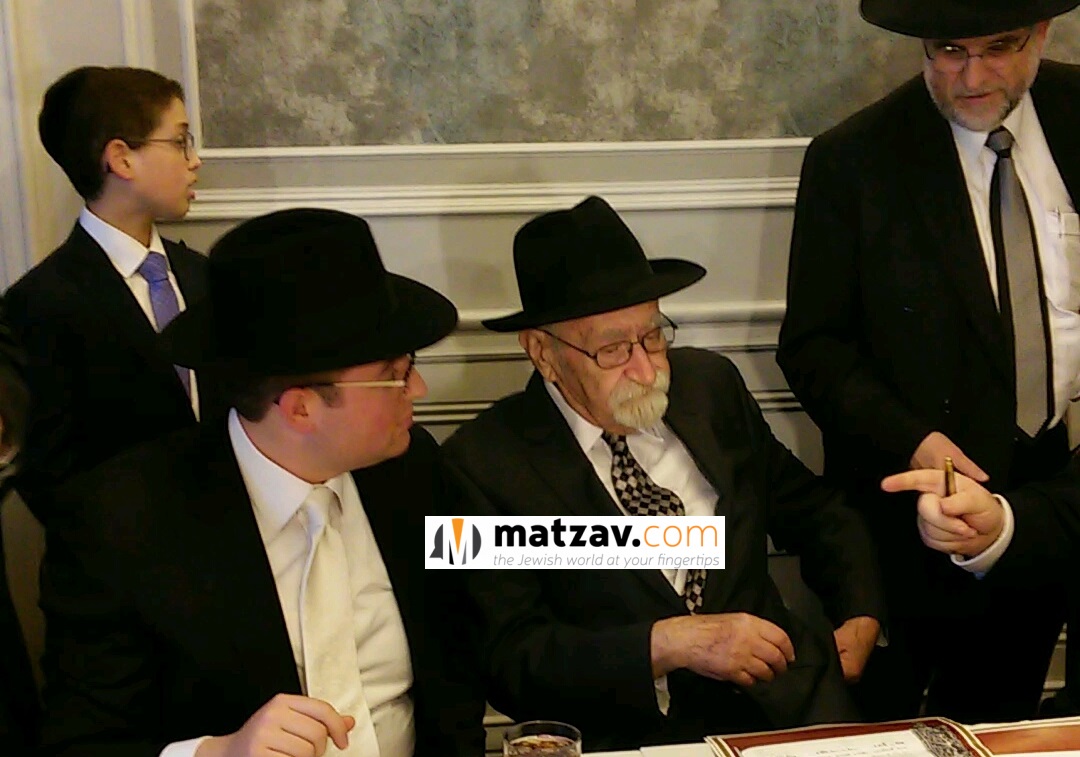
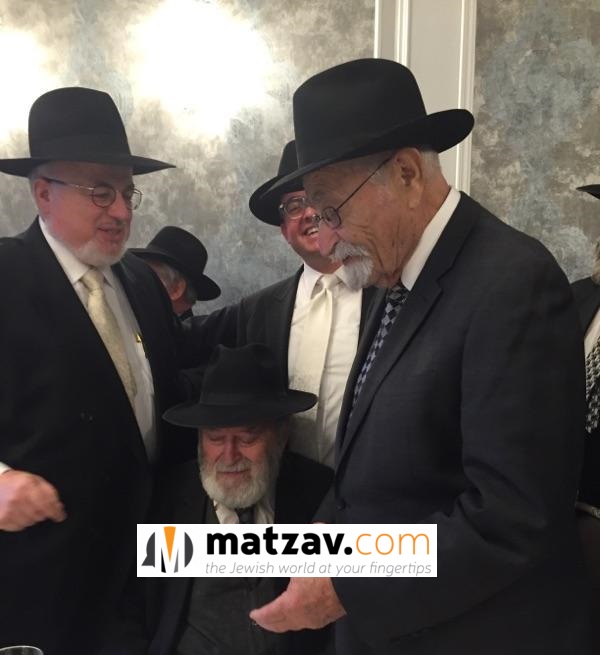
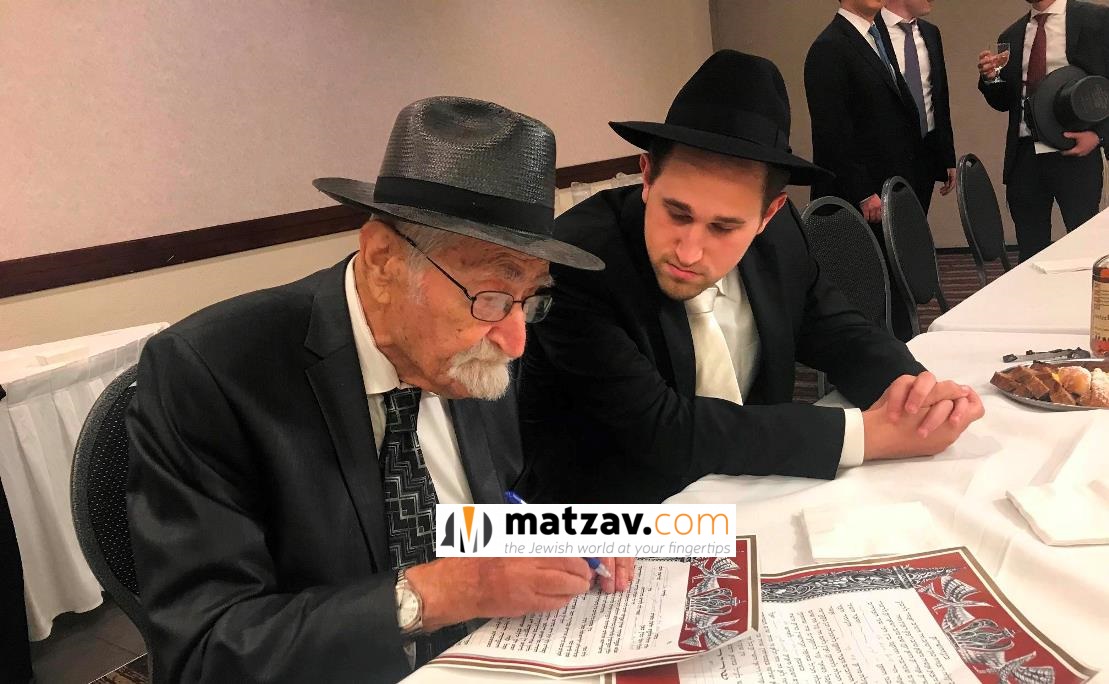
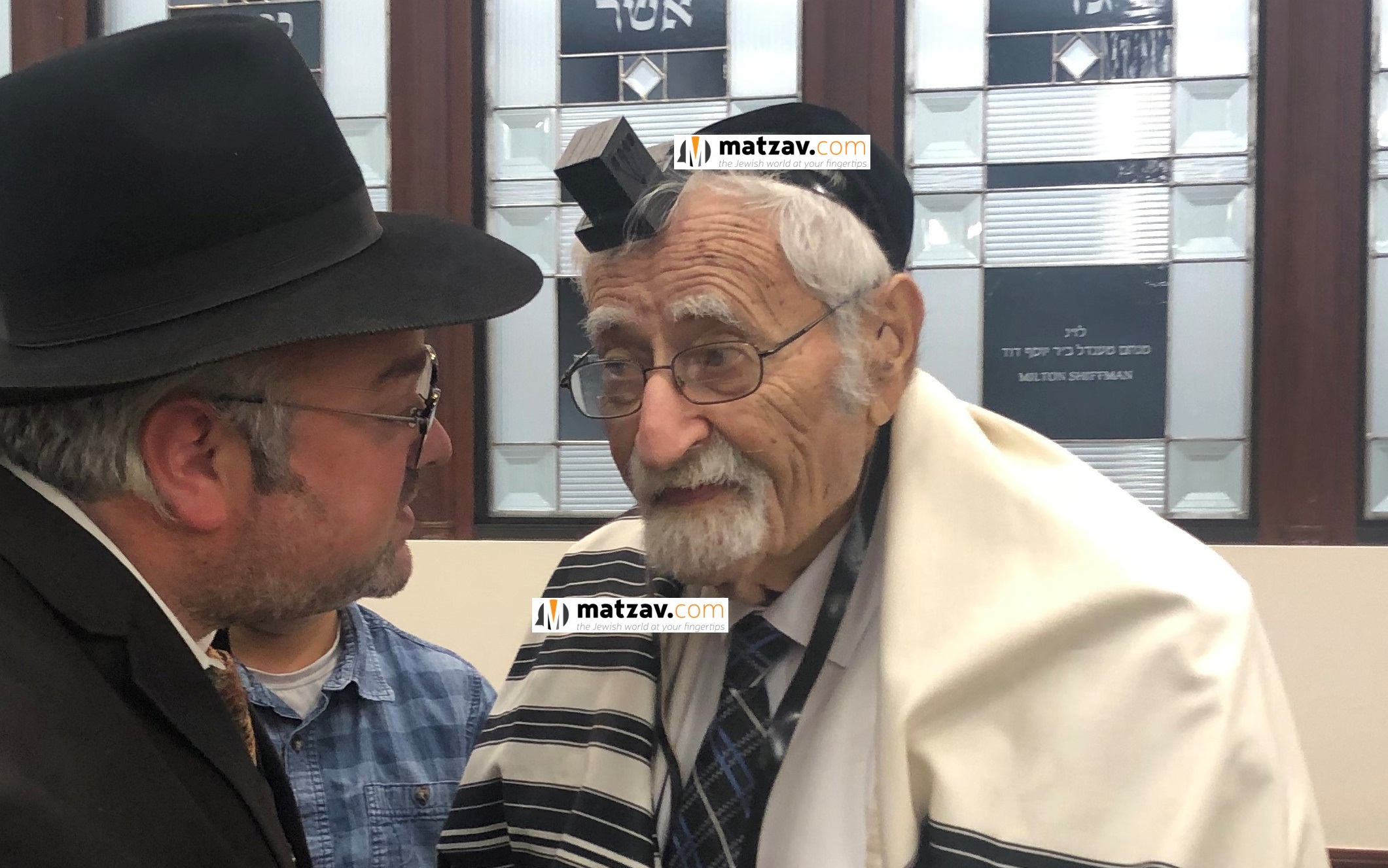
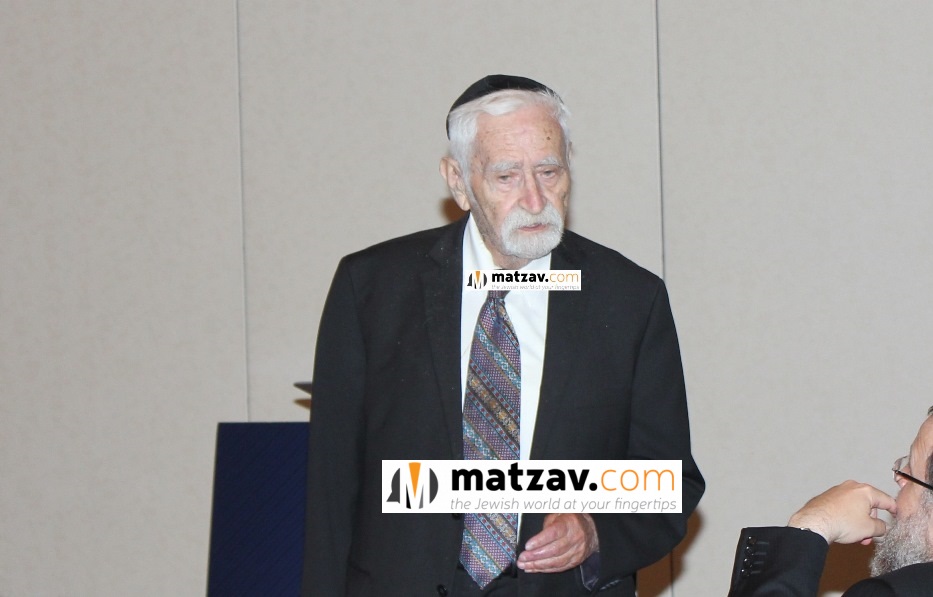


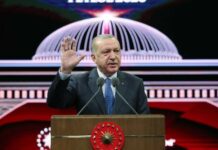







So who was Rav Ephraim Greenblatt, mentioned in the Igros Moshe?
a brother
Nephew actually, though they were similar age
Rav Nota was Rav Ephraim’s uncle
One of the finest men in America, hands down. I was honored having his son as a Computer Science instructor and colleague at Queens College.
About 40 years ago I was an aid at a g-t he was writing. While he was writing I noticed a newspaper laying nearby and I began reading the front page. At some point he noticed me looking at the paper and he tells me very sternly,” an aid has to to do Teshuva.”
He also gives/gave the hechsher for Tabasco Sauce…
His uncle was the Rivvivos Ephriam
The Rivevos Efraim was his nephew. the son of his older brother Horav Avrohom Boruch Greenblatt ZTL Yerusholayim
The group in Boston formed around the Rav ZTL who was its singular head. It dissipated in 1942, when the Rav succeeded his father ztl at R.I.E.T.S.
That is not true. It was headed by The Rav (a nephew of The ROV) and his future cousin Reb Michel Feinstein Zt”l a close Talmid and future son in law of the Brisker Rov. It was called היכל רבינו חיים הלוי.
Dear Dr. Yidd, that is untrue, the group formed around The Rav Dr. Z”l, along with his future cousin Reb Michel Feinstein Ztvk”l, who later became the son in law of The Rav’s uncle, THE ROV, THE BRISKER ROV!
He was a Great Talmid Chacham in every way. So humble yet laser focused. He was such a great inspiration!!
He was The expert in Gittin people came from all over the world to learn from him.
The world has lost a Giant!!
Dear Dr. Yid, The Rav Z”L started the “Boston Yeshiva” named, Heichal Rabbeinu Chaim Halevi. He was later joined at the helm by Reb Michel Feinstein who delivered shiurim during the week and The Rav delivered shiurim over the weekend. Later Reb Michel went on to marry the Rav’s cousin Lifsha the daughter of THE ROV, THE BRISKER ROV.
R. Michel was already the Rav’s cousin before he married the Brisker Rav’s daughter. R. Michel’s great uncle was the Rav’s grandfather, R. Elyah Pruzhaner
He flew out to Norfolk 15 years ago to sit on the beis din that converted me and my wife. He was a wonderful man, this is heart breaking.
He was part of the beis din for my conversation. I still remember the things he said that day. May his neshama have an Aliyah in shamiyim!
Wow! Aside for all, we lost a musig of authentic gadlus of the amohl which no longer exists.
That group in Boston included Rav Michel, Rav Yoshe Ber-as the Roshei Kollel, and two distinguished Alte-Mirrer then Bochurim Rav Shamshon Brodsky (R’ Chaim Mendel’s father), and Rav Simcha Scheps, amongst some others.
Rav Michel would marvel about that one year for decades, up until his passing.
יהי זכרו ברוך
He did all 3 of my gitten.1964,1978&2003.
I might need him again.
Consider Dr. Phil’s counseling
I was eid by three or four of his gittin in San Antonio, Texas, in Rabbi Scheinberg Ztzl’s shul, and a couple of years later he flew all the way to South America to help me with my get p’turim about 27 years ago. I am enormously indebted to him. Yehi zichro boruch
Rav Scheinberg of San Antonio had him do my mother’s get! Perhaps the eid in the message above was the same one!
Rav Nota Greenblatt Zatzal was a tzadik, tremendous talmid chochom and kind, humble. I was pleased to see in recent Mishpacha Magazine Pesach edition he along with 200 charedi rabonim was one of the rabbonim who signed urging reporting child abuse to the authorities to prevent abuse. He had a moral courage and leader for Klal Yisroel.
Beautiful. Thank you for this , he was my grandfather and his neshama should have an aliyah. Please tell anyone interested that an email address has been set up for personal stories:
[email protected]
I was zoche to meet your Zeide few times, and to speak with him in various inyanim. His absolute command in all areas of halacha was mind boggling. He was a master mohel, a phenomenal expert in gittin, eiruvin, and mikvaos, and knew and understood practical kashrus in the food industry, as if he did nothing else except for giving hechsherim.
When asked a halachic question, his response was immediate, concise, always to the point, and delivered with perfect humility and kindness.
When he shared a story, it was also done with factual precision, without exaggeration so prevalent today, with correct names, places, and dates, and the story always had a purpose. He didn’t waste time schmoozing about nonessential matters, or simply reminiscing that had no bearing on his listeners.
The man was a rare gem of a human being, an enormous talmid chochom, who was always at home in any sugya, an outstanding posek, and a true rabbis’ rabbi.
יהי זכרו ברוך
Can someone explain how both Rabbis Greenblatt ended up in Memphis and what position each one occupied?
What is a “kibbutz”? (I’m assuming we’re not referring to an Israeli commune).